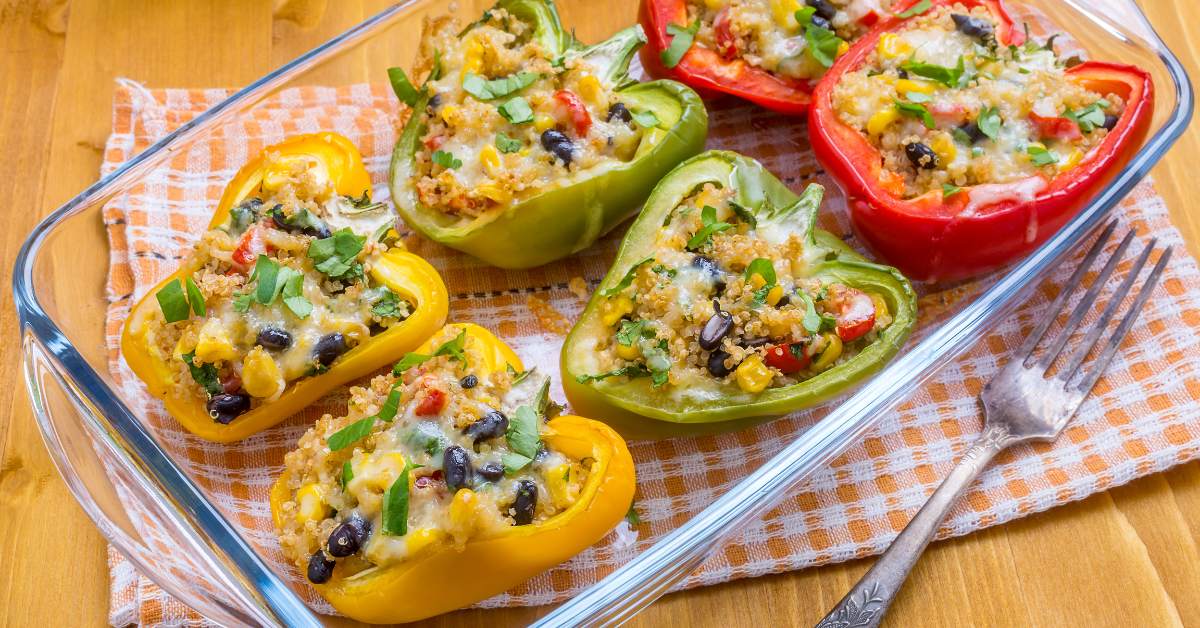Zucchini is a favorite and versatile vegetable that deserves a place on your table! There are many ways to enjoy zucchini from fresh salads to roasting and baking.
With an overall neutral flavor, zucchini can also be used in many of your favorite dishes as a substitute for a variety of foods—including pasta noodles!
What Are Zucchini Noodles?
Zucchini noodles or zoodles as some like to call them are simply zucchini that has been cut into thin strips using a spiralizer.
This turns them into the shape and size of noodles so that you can use them in place of pasta noodles. You can do this for a large or small batch and then save the extras.
There are a few different options that you can use to turn your zucchini into noodles.
If you don’t want to get any extra equipment for your kitchen, you can use a knife to cut the zucchini into thin strips. This is the most basic option, but it may be difficult to get the zucchini thin enough with just a knife.
A spiralizer is the best tool for the job.
Prices pulled from the Amazon Product Advertising API on:
Product prices and availability are accurate as of the date/time indicated and are subject to change. Any price and availability information displayed on [relevant Amazon Site(s), as applicable] at the time of purchase will apply to the purchase of this product.
There are counter top ones and handheld ones. A countertop spiralizer is great when you want to make a large batch at one time.
Handheld spiralizers are smaller but they take more effort so preparing a large meal may be challenging.
Finally, a julienne peeler is also an option. Your noodles will probably be shorter but using this tool will also be fairly time consuming.
How to Get the Moisture Out of Zucchini Noodles
One of the biggest complaints that people have with zucchini noodles is that they end up getting soggy.
Vegetables naturally have a higher water content than pasta so they are more prone to releasing water, especially when cooked.
If you’re using the noodles for dishes and want to avoid your vegetable noodles getting soggy, taking an extra half hour to remove the water is the best solution.
Place the zoodles in a colander over the sink and add a small amount of salt. Let them sit for half an hour as the salt will stimulate the noodles to release water.
Squeeze the zoodles gently to drain any residual water. People who really want their noodles to be very dry may even want to put them in cheese cloth and squeeze gently to absorb excess water.
Prices pulled from the Amazon Product Advertising API on:
Product prices and availability are accurate as of the date/time indicated and are subject to change. Any price and availability information displayed on [relevant Amazon Site(s), as applicable] at the time of purchase will apply to the purchase of this product.
Avoid squeezing them too much as this will make them mushy and lifeless.
How to Dehydrate Zucchini Noodles (With or Without a Dehydrator)
If you have a lot of zucchini and want to dry it for future use, this is also an option. This can be used with zucchini but also any type of summer squash.
Many people prefer to make their own squashetti and dry it so that it’s readily available. If you have a dehydrator, then the process is fairly simple but it’s certainly not required.
Start by cleaning and zoodling your preferred squash. You can add seasoning if you want to the noodles or leave them plain.
Place the noodles on the dehydrator and set the temperature to 125 F.
Prices pulled from the Amazon Product Advertising API on:
Product prices and availability are accurate as of the date/time indicated and are subject to change. Any price and availability information displayed on [relevant Amazon Site(s), as applicable] at the time of purchase will apply to the purchase of this product.
Avoid having the zucchini pile up as this may cause it to remain moist.
For oven drying, follow the same preparation process but spread the zucchini on baking sheets.
Spray a small amount of oil on the pans or use parchment paper to avoid having it stick. Set the oven to a low temperature, preferably 150 F or lower.
Check the zucchini every hour for dryness and remove when completely dry.
For both methods, you can wait until the noodles have cooled. Then store them in airtight containers preferably in a cool, dry place until you’re ready to use them.
How to Turn Your Zucchini Pasta into Zucchini Powder (& Why You Might Want To)
If you want to sneak some vegetables into your dishes without anyone knowing, turning it into a powder is one of my favorite mom hacks!
After the zucchini is completely dried, put it into a food processor and pulse until it reaches the desired particle size.
Prices pulled from the Amazon Product Advertising API on:
Product prices and availability are accurate as of the date/time indicated and are subject to change. Any price and availability information displayed on [relevant Amazon Site(s), as applicable] at the time of purchase will apply to the purchase of this product.
If you really want a fine powder, consider using a clean coffee grinder.
Ways to Use Dried Zucchini Noodles (AKA “Zoodles”)
There are many ways that you can use your dried zoodles. If you want to use them in pasta dishes, you can rehydrate them with water and then lightly cook before serving with your preferred pasta sauce.
If you want to use them in other dishes, this is an option as well. Consider adding them to soups for an easy addition of vegetables.
They can also be rehydrated and used in baked goods such as zucchini bread.
The Best Way to Store Them Long-Term
Like most vegetables and dried items, keeping the zoodles stored away from light and heat will keep them fresh for the longest possible period of time.
It’s best to store them in glass or metal containers with tight fitting lids to avoid having any moisture enter the container. Most people store them in a cool, dry place such as a pantry.
To avoid having too much moisture in your noodles, you may want to store them in smaller containers. Make sure to label and date the zucchini.
If you’re making several batches, use the oldest noodles first to avoid having any difficulty with potential spoilage.
Frequently Asked Questions
Does zucchini need to be blanched before dehydrating?
No, there isn’t any benefit from blanching zucchini before dehydrating either so this is not a required step.
How long does it take to dehydrate zucchini noodles?
Since the noodles are fairly small, it should take about 6-10 hours if you’re using a dehydrator. The oven method may speed up the process.
How long will dried zucchini noodle last?
If the noodles are dried correctly, you can expect them to last around 4-6 months. Make sure to store them correctly and inspect for any problems before using the dried noodles.













